Designing habitat for fish as land art in the polder
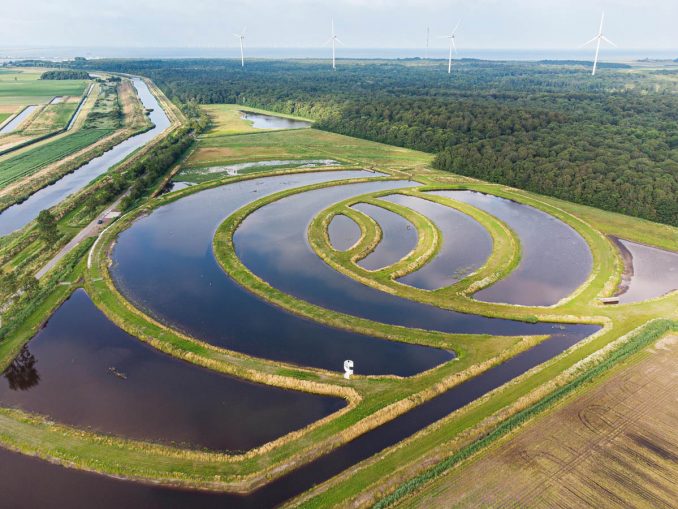
Land Art
Commissioned by the Hoogheemraadschap Hollands Noorderkwartier, HOSPER has designed a breeding and growing area for fish in the agricultural landscape of the Wieringermeer. The design was drawn up in close collaboration with artist Pé Okx and ecologist Cor ten Haaf. Landscape architecture, art and ecology are fully intertwined in the design. The combination of landscape, art and ecology creates a unique habitat for fish and a contemporary ‘landmark’, which fits in with the cultivated character of the Wieringermeerpolder. The concept is based on the artistic design of the landscape, while at the same time creating a good starting situation for the development of high nature values.
The project was completed in 2020. The construction of the Fish Cycle and the fish passages has created an ecological connection between the Amstelmeer Canal (with the IJsselmeer and the Wadden Sea as an extension) and the water system of the Wieringermeer with the Robbenoord forest.
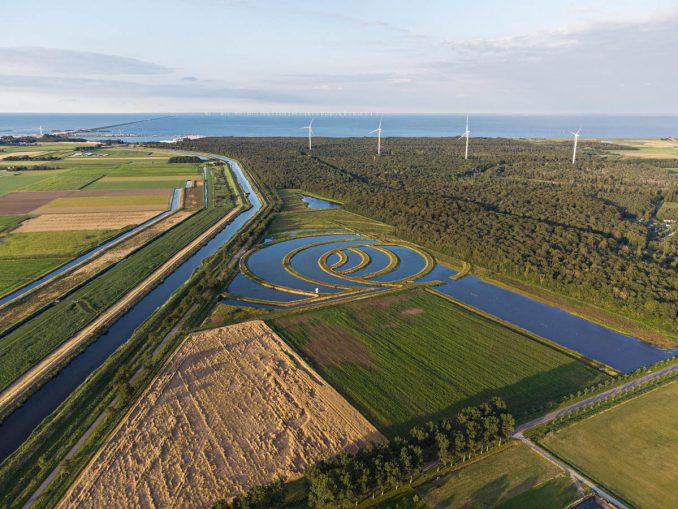
Concept
The ‘Fish Cycle’ refers on the one hand to the circle of life of the fish that can reproduce there. On the other hand, it refers to the ripples created when two stones are thrown into the water. This has resulted in an artistic style in which the water flows in circles through the landscape.
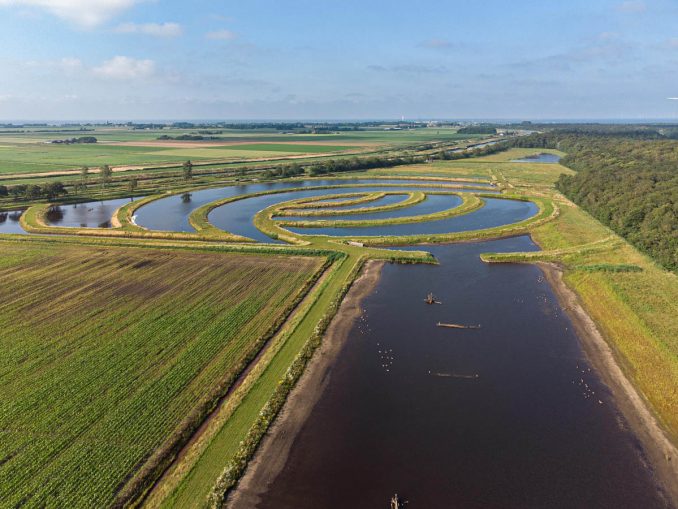
Design
The design is spectacular in its simplicity. The clear and large-scale circles provide a strong image and are in line with the robust dimensions of the polder.
Water, grass dikes, reeds and various (underwater) vegetation are given a clear place in the design. The variation in water depths, directions of flow and orientation relative to the sun creates a richness in ecology, colours and structures.
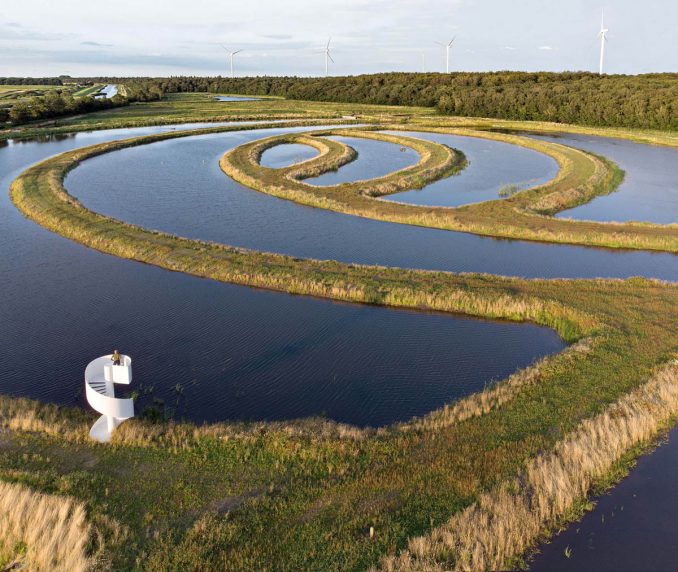
Water and ecology
For the longest possible route – which means the largest possible useful surface – the water meanders through the area like in a radiator. The different parts are interconnected by fish ladders and innovative fish lifts that connect the area with the Amstelmeer Canal and the polder water.
There is a lot of variation in water depths; from puddle-swamp-like on the edge to a depth of well over a meter in the centre. Underwater structures such as tree stumps and gabions make the area even more attractive as a breeding and hiding place. The effectiveness of the various objects is measured. Besides fish, the area is also valuable as a breeding and wintering area for reed birds and water birds. A new forest edge ensures an ecological transition to the Robbenoord forest.
Management
The dikes are grazed by sheep so that they remain visible as taut elements in the landscape. The reed will occasionally be mowed with a tractor (multifunctional amphibious machine) and removed via the dike structure.
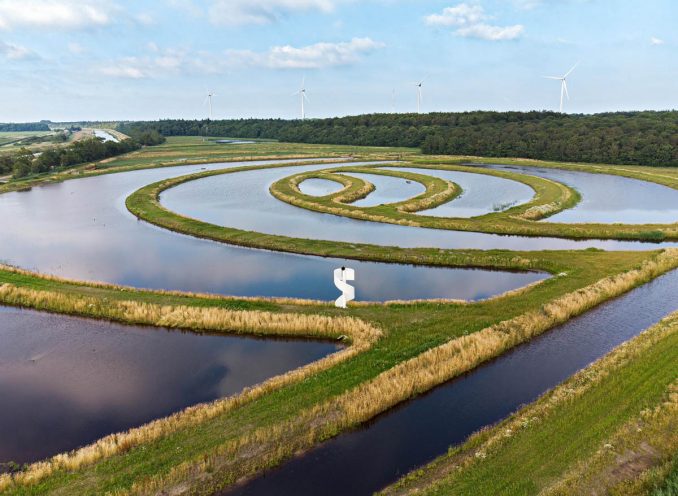
Observation Tower
A public grass path over the dike connects the Wieringerrandweg with the Robbenoordbos. An observation tower – designed by HOSPER – is situated along the grass path. From there, visitors have a beautiful view of the expressive shapes and the rich ecology of the area, including many birds. The shape of the tower is related to the circles of the Fish Cycle. The observation tower is a strong eye-catcher, inviting passers-by to enter the area.
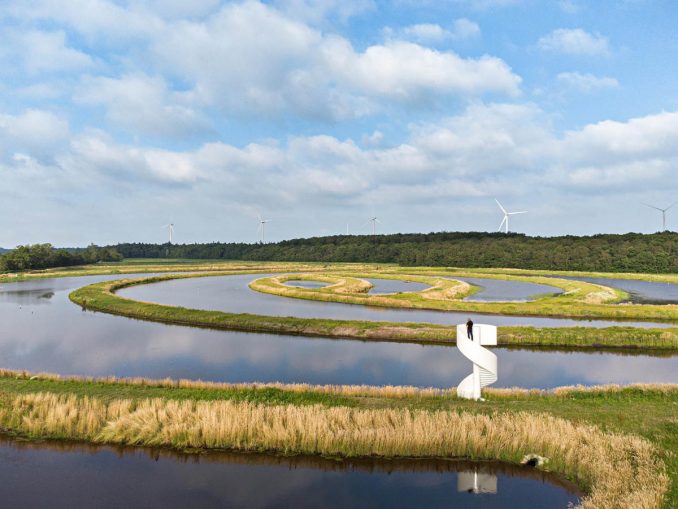
Wieringermeer Fish Cycle
Location: Wieringermeer, North Holland, Netherlands
Designers: HOSPER, Pé Okx (artist), Cor ten Haaf (ecologist).
